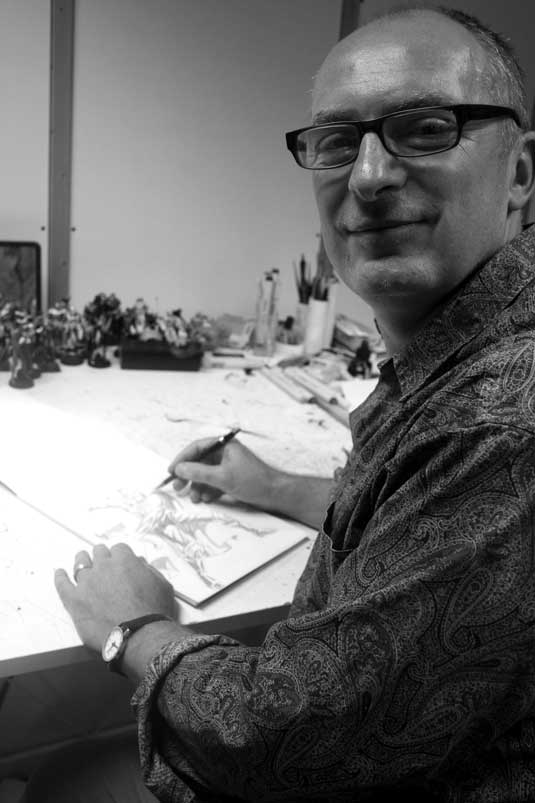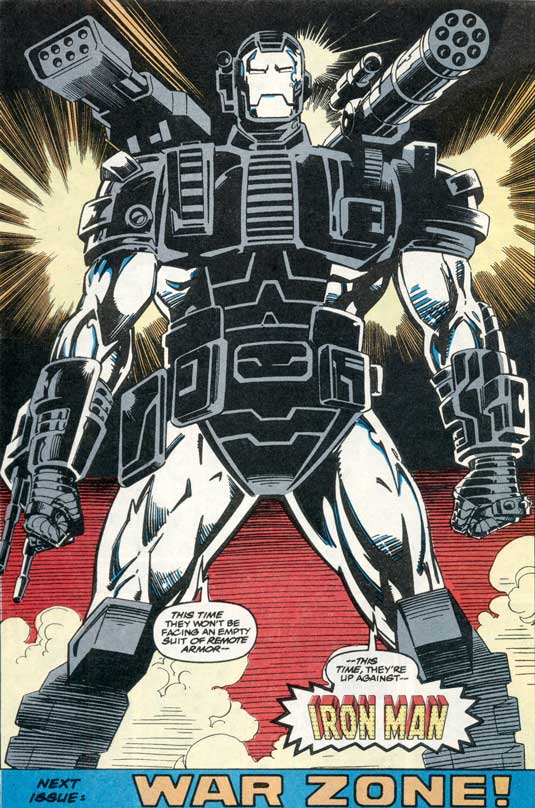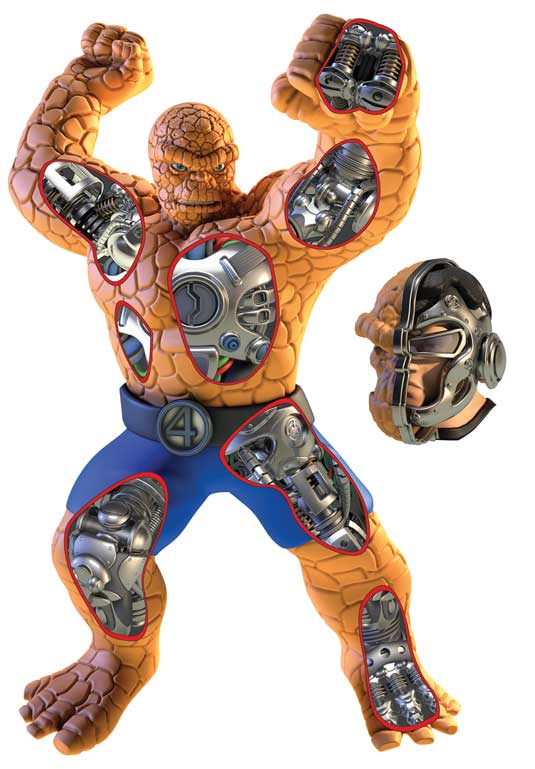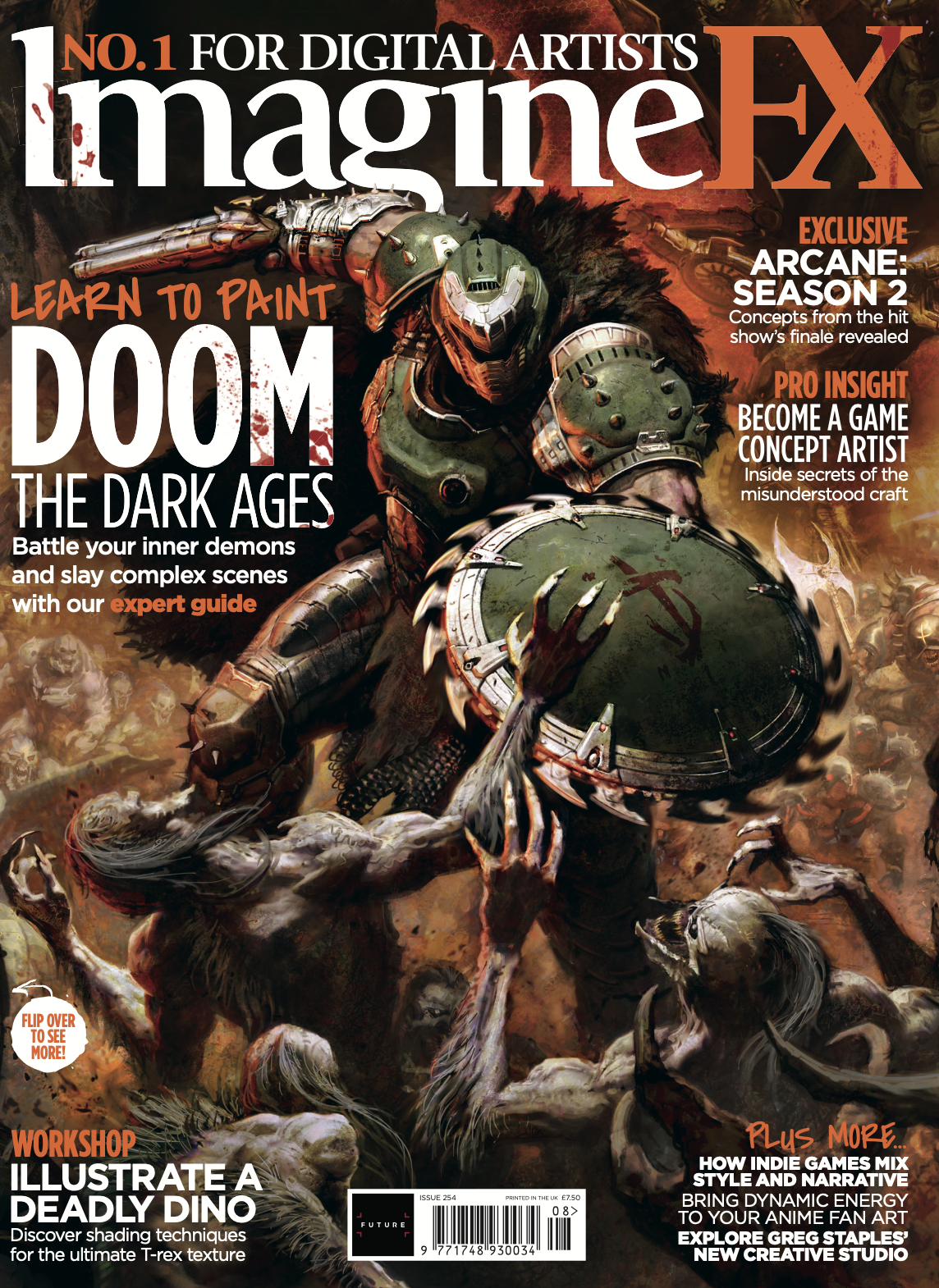How to hop between 2D and 3D art
We talk to industry veteran Kevin Hopgood about hopping between 3D and 2D comic and game art.
Kevin Hopgood's career has followed the ebb and flow of the entertainment industry. He began as an artist for 2000 AD and Marvel UK in the mid-80s, and created Iron Man's iconic War Machine and Hulkbuster armour in the early 90s.
Following the comic book crash of 1996 – which resulted in Marvel filing for bankruptcy – Kevin spent three years in the games industry, working on models for Psygnosis' Blast Radius.

Following dabbles in Warhammer 40,000 and Doctor Who comic books, Kevin is back in familiar territory with publisher Eaglemoss's Marvel Fact Files, a series of collectible documents based on some of the world’s most popular comic book characters.
Kevin's brought some of the skills he's learned through his career with him, though – notably, an understanding of how 3D software can be used for tasks which would conventionally call on 2D software.
"I initially did the illustrations in Adobe Illustrator, and treated them as a technical drawing exercise," he says. "The jobs seemed to demand more 'shiny chrome' effects, which can be a pain to draw, but a really easy effect to get in 3D.
"I finally bit the bullet with a cutaway of Iron Man villain, The Titanium Man. That one turned out how I wanted, so I've stuck with a 3D workflow for the rest of the illustrations."

Art that's accessible
As a veteran of 3D art, Kevin has seen it change from a complicated endeavour to something far more accessible and manageable. "The big game changer has been digital sculpting, and the ability to shunt around millions of polygons," he says.
"I’m a bit old school, so I still keep an eye on the polygon count while I'm working. Just because you can use millions of polygons doesn't mean you have to, necessarily."

Always one step ahead of the game, Kevin's next project adds another medium to his prodigious CV: 3D printing.
3D printed figures
"Eaglemoss also does a range of Marvel & DC Comics figurines," he says. "In the past I've done concept sketches for the modellers to work from, but I've been aware that with 3D printing it's possible to sculpt digitally and output a model to make a cast from.
"I've been honing my 3D skills and Eaglemoss have finally let me have a crack at doing a figurine."
Check out Kevin's impressive cutaways for Eaglemoss's Marvel Fact Files here. This article first appeared in 3D World magazine.
Like this? Read these!
- Marvel illustrator on managing your demons
- Download free textures: high resolution and ready to use now
- Hands-on review: Adobe After Effects CC

Thank you for reading 5 articles this month* Join now for unlimited access
Enjoy your first month for just £1 / $1 / €1
*Read 5 free articles per month without a subscription

Join now for unlimited access
Try first month for just £1 / $1 / €1
Get the Creative Bloq Newsletter
Daily design news, reviews, how-tos and more, as picked by the editors.

The Creative Bloq team is made up of a group of art and design enthusiasts, and has changed and evolved since Creative Bloq began back in 2012. The current website team consists of eight full-time members of staff: Editor Georgia Coggan, Deputy Editor Rosie Hilder, Ecommerce Editor Beren Neale, Senior News Editor Daniel Piper, Editor, Digital Art and 3D Ian Dean, Tech Reviews Editor Erlingur Einarsson, Ecommerce Writer Beth Nicholls and Staff Writer Natalie Fear, as well as a roster of freelancers from around the world. The ImagineFX magazine team also pitch in, ensuring that content from leading digital art publication ImagineFX is represented on Creative Bloq.
